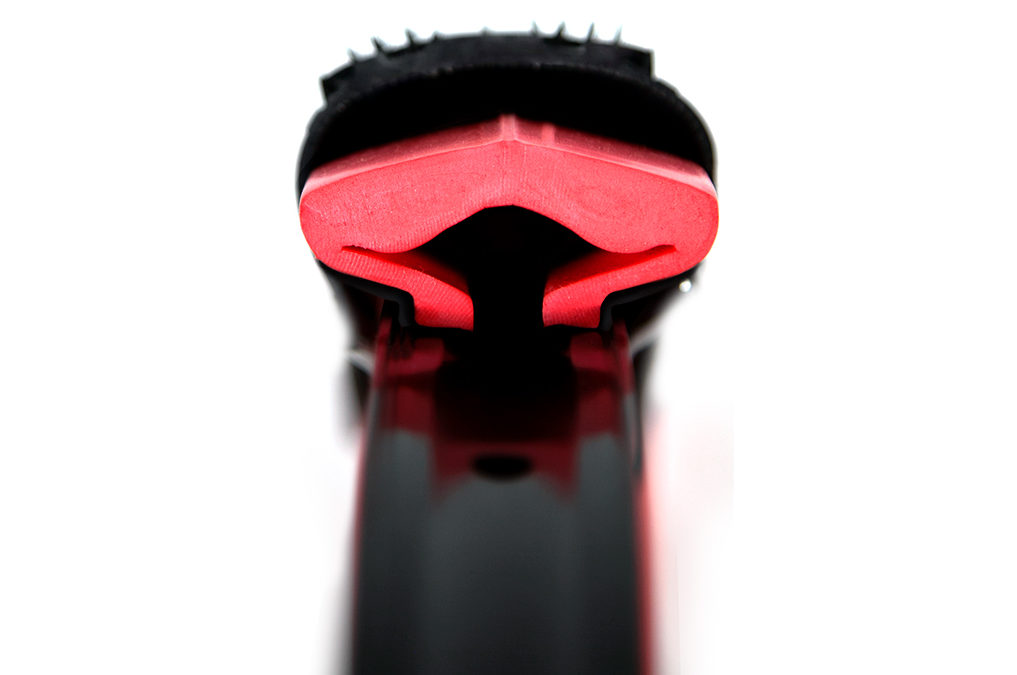What’s the deal with tire inserts?
A guide to the advantages - and drawbacks - of inserts
 Photo by:
Tannus
Photo by:
Tannus
Tire inserts, possibly one of the newest technical changes in mountain biking not to involve electronics, are gradually gaining momentum in mountain biking. After gaining a foothold in gravity racing, trail and cross country racers are increasingly taking advantage of inserts. In fact, at this year’s BC Bike Race all of the men’s podium and most of the women’s podium had something hiding in their tire. Some brands are even sending bikes out with inserts already installed.
But what are tire inserts? How do they work? And why are so many riders using them? Here’s a quick guide to mountain biking’s latest low-tech innovation.

What are tire inserts?
Let’s start with the first question. What are tire inserts? There are several very different designs out there, CushCore being the most well-known, but they all share the same basic idea. Something solid-ish that goes inside a tire, usually tubeless tires, instead of just air. Inserts can help protect the rim and protect the tire casing itself. Depending on the design, they can also help
Where does the idea come from? Mountain bikers borrowed and adapted the idea from off-road motorcycles. In moto, a solid rubber-foam insert – called a “mousse” or “bib-mousse” fills the entire inside of the tire instead of air.
For bicycles, where riders have to power their own movement, the weight of a solid insert is an obvious disadvantage. Instead, most bicycle tire inserts use some sort of partial insert in combination with air and, usually, tubeless tire sealant. Though there are designs that use tubes, too. Inserts vary widely in design, which is where things get interesting. Each design has its own set of advantages and disadvantages.

Why run inserts?
There are a few different reasons to run tire inserts on bikes. The most obvious advantage is that tire inserts can help prevent flats. There are also benefits in handling and helping keep tubeless tires seated, depending on which design you use.
Fewer flat tires and dented rims
How do inserts protect against flats? By providing a buffer of soft material between the tire, or the ground, and the rim. When you hit something too hard the tire will compress into the foam instead of directly contacting the rim. This protects the rim from damage. It also protects the tire from pinch flats and, to a lesser extent, from punctures from sharper rocks.
Glass, nails, and any other object that slices instead of pokes into the tire are still a problem, of course. As are sidewall slices from sharp rocks. So the advantage of inserts depends, to an extent, on where you regularly ride.
Better grip
The second advantage is an offshoot of the first. Since you don’t have to worry as much about flatting, you can safely run lower tire pressures. That gives you better grip and lower rolling resistance. Better grip because the lugs can conform to, and hook into the trail surface. And better rolling resistance because the tire absorbs small obstacles instead of deflecting off of them.
Depending on the design, tire inserts can also provide more sidewall support at lower pressures. Some inserts, like CushCore, physically push against the side of the tire. Others, like Tannus’ tubeless inserts, partially support the sidewall while leaving room for the tire to move. In both cases, this provides support for the sidewalls so you can still corner hard at low pressures while still letting the tire tread better conform to, and grip the surface.
Most designs also help to some extent in keeping tubeless tires seated, since they physically push the tire bead against the rim. Less burping tires, more braaping!
What are the drawbacks?
This all sounds good so far, but there are a few drawbacks to tire inserts. First, they add weight. This affects acceleration and makes climbing less efficient. This is the main argument against inserts, especially for weight-conscious cross country riders. Some riders will run lighter casing and faster treads with inserts since they don’t have to worry as much about flats, which helps balance out the weight and can lower rolling resistance even more. But if you already run the lightest tires possible and never flat, there may be less of an advantage.
Second, some inserts also change how the tire feels on the trail, giving it a more muted or damped feel. CurshCore argues this is a benefit since it means the tire deflects less, but it can be divisive among riders. Some like the feeling of being connected to the ground. Riders that prefer a more lively feel to their bike can be less enthused.
Last, it does make it harder to get the tire onto and off of the rim. Again, some designs are much easier than others. I’ve been able to remove some tires and inserts by hand with just a bit of extra effort. Others require tire levers, solid technique and some elbow grease.
